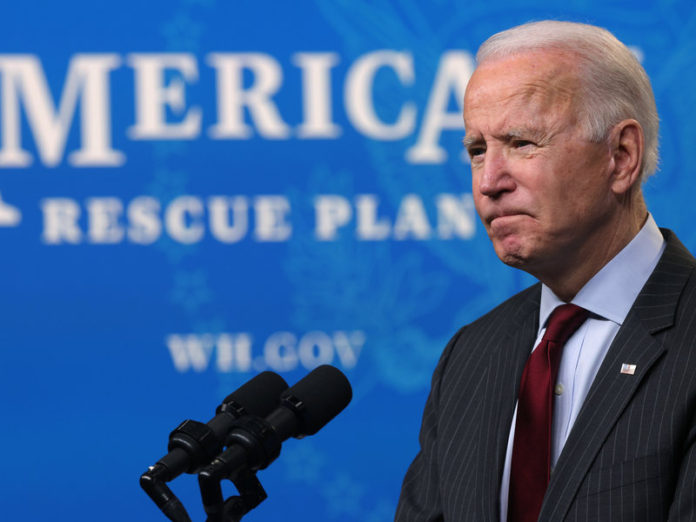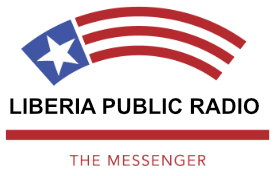
By Scott-Horsley| National Public Radio, USA
For President Biden, it’s a $1.9 trillion gamble.
If successful, his “American Rescue Plan” will help struggling families and businesses weather an unprecedented pandemic and provide a boost to a badly dented economy. It’s also broadly popular with voters.
Critics, however, worry it will be end up being a poorly targeted plan that squanders trillions in borrowed money in ways that will do little to improve the nation’s long-term economic outlook.
“We are well past the point where our economy is collapsing,” said Sen. Pat Toomey, R-Pa., this week. “The last thing we need is a massive multi-trillion dollar, universal spending bill.”
“The question isn’t whether we need big stimulus,” former Treasury Secretary Larry Summers told NPR’s Weekend Edition this month. “The question is, do we need the biggest stimulus in American history?”
Biden’s gamble arrives after Congress has already passed trillions in aid since last year, leaving the country’s deficit at its second highest since World War II.
The latest stimulus plan is comprehensive, at least under the version that House Democrats are set to pass along party lines as early as Friday.
For starters, it would include direct payments of $1,400 to most Americans. It would also include extended unemployment benefits, money to help schools re-open and aid to state and local governments.
Progressives also hoped to use the plan to gradually boost the federal minimum wage to $15 an hour, although that effort appeared in jeopardy after an adverse decision from the Senate parliamentarian Thursday night.
Summers, who served in both the Clinton and Obama administrations, has warned that deficit-financed spending now on a short-term relief package could make it harder for the Biden administration to find money later for long-term investments in things like infrastructure.
He’s also concerned that with consumer spending already on the rise, a surge in new federal spending could overwhelm businesses, triggering something the U.S. hasn’t seen in a long time: inflation.
“We need to make sure we’re concerned with not overheating the economy,” Summers said.
Senior administration officials, however, are pushing back, saying millions of Americans still need the help badly.
“I’ve spent many years studying inflation and worrying about inflation. And I can tell you we have the tools to deal with that risk if it materializes,” Yellen, a former Federal Reserve Chair, told CNN this month.
“But we face a huge economic challenge here and tremendous suffering in the country,” she added. “We’ve got to address that. That’s the biggest risk.”
Biden has shown no signs of retreating from his plan. On Monday, he took his critics head on.
“Critics say the plan is too big,” Biden said. “Let me ask them a rhetorical question: What would you have me cut?”
Plenty, according to critics of the plan. Here are key elements of Biden’s plan, and why some are pushing back.
$1,400 Relief Payments
Biden’s plan would send $1,400 payments to most Americans. That’s in addition to the $600 payments that already went out this year and the $1,200 that went out to most Americans earlier in 2020.
For lower-income families, who have been disproportionately hurt by the recession, the additional money could be an important lifeline.
Households making less than $46,000 spent most of their $600 payments almost immediately, according to researchers at Harvard who studied credit and debit card data.
But Biden’s plan doesn’t limit payments to lower-income families. Individuals making up to $75,000 and couples making up to $150,000 would be eligible for the full amount, while higher earners would receive less.
Whether these higher income Americans would spend those checks, delivering stimulus to the economy, is in doubt.
According to the Harvard researchers, families making more than $78,000 spent little of their January payment, socking most of the money into savings.
To critics, that makes the blanket federal payments to wealthier families unnecessary since many have been largely unscathed by the recession.
“The average household in America is in a better financial position today than it was before the pandemic,” Toomey, the Pennsylvania senator, said this week. “If there were to be further fiscal policy, it should address where the problem is and not where the problem is not.”
Unemployment Benefits
At last count, some 19 million Americans were receiving some form of unemployment assistance.
While the job market has improved since the early months of the pandemic, job gains have largely stalled in recent months. And forecasters say it could take some time before people in hard-hit service industries such as travel and live entertainment are back at work.
In December, Congress approved a temporary extension of jobless benefits passed early in the pandemic, but that begins to run out in mid-March. Biden’s plan would extend aid through August. It also boosts the federal government’s supplemental unemployment benefit from $300 to $400 a week.
Some employers have complained that robust jobless benefits discourage employees from going back to work or looking for new jobs.
But researchers at the University of Chicago and the JPMorgan Chase Institute found little evidence of this.
In the early months of the pandemic, when the federal government raised unemployment benefits by $600 per week, more than half the idled employees returned to work before those benefits ran out. When the extra benefits did expire last July, there was no sudden increase in people seeking new jobs.
Researchers argue the supplemental benefits may have actually increased overall employment by giving jobless people more money to spend, which in turn helped pay the wages of other workers.
Aid to Cities and States
Biden’s proposal includes $350 billion to address pandemic gaps in state and local government budgets.
Yet those gaps have turned out to be smaller than many people feared and some governors like Asa Hutchinson from Arkansas say their states don’t need the aid.
“On average, state revenue has mostly recovered. And the key reason for that is that income has mostly recovered,” said Marc Goldwein of the Committee for a Responsible Federal Budget. “The economy is doing much better right now than we thought it was going to be doing early in the pandemic.”
Because upper-income workers, who pay the lion’s share of state taxes, have generally managed to keep working, the pandemic drain on state revenues has been muted. J.P. Morgan estimates that state revenues nationwide were only slightly lower in 2020 than the year before the pandemic.
But that’s not every state. Those that rely heavily on tourism and oil drilling have been hit much harder.
“States like Nevada and Hawaii and Alaska and Texas are not doing very well,” Goldwein said. “States like California have a $25 billion surplus. Idaho has had the fastest revenue growth it’s seen in years. So there really are big differences between the states.”
Those differences don’t fall neatly along party lines, even though Congressional Republicans have resisted state and local aid as a “blue state bailout.”
“The pandemic isn’t partisan,” said Michael Leachman of the left-leaning Center on Budget and Policy Priorities. The budgets of some blue states like California have fared better than those in red states like North Dakota, where revenues fell nearly 10% last year according to J.P. Morgan.
State and local governments have cut nearly 1.3 million jobs in the last year — nearly twice as many as during the last recession.
“After the last recession, we made a big mistake. The federal government provided some aid to states and localities, but it was far too little and it ended much too soon and the effect of that was to really slow the economy’s recovery,” Leachman said. “We would be much better off to make sure that we’re not making the same mistake again.
$15 Minimum Wage
One of the most controversial aspects of the original Biden package was its push to gradually raise the minimum wage to $15 an hour by 2025. That’s more than twice the current federal minimum of $7.25 an hour, which hasn’t budged since 2009. (Had the minimum wage simply kept pace with inflation, it would be about $9 an hour today.)
The minimum wage provision ran into a procedural roadblock Thursday when the Senate parliamentarian said it could not be included in a budget bill under the special rules Senate Democrats are using to sidestep a GOP filibuster.
Progressives vowed to pursue a wage hike through other means, but that effort faces long odds, given political opposition from Senate Republicans and some moderate Democrats.
House Speaker Nancy Pelosi called the parliamentarian’s decision disappointing.
“House Democrats believe that the minimum wage hike is necessary. Therefore, this provision will remain in the American Rescue Plan” when the House takes the bill up today, Pelosi said in a statement.
Forecasters from the Congressional Budget Office say boosting the minimum wage to $15 an hour would deliver a pay raise to as many as 27 million Americans. But they caution it would also cost as many as 1.4 million jobs.
Economists have long theorized raising pay for low-wage workers would come with tradeoffs — including higher prices for consumers and a shift to automation.
Federal Reserve Chairman Jerome Powell declined to take a position on the proposed wage hike this week — calling it a classic policy choice for lawmakers — but he did say research suggests the effects are more nuanced than was once believed.
Although the federal minimum wage hasn’t changed in more than a decade, many cities and states have already adopted their own, higher minimums. Florida voters, for example, decided in November to boost that state’s minimum to $15 an hour by 2026.






















